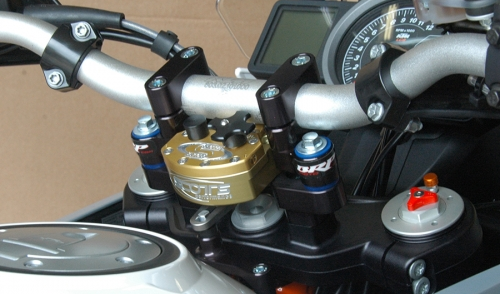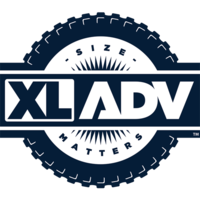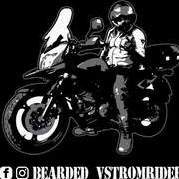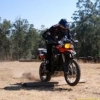
By Sean Goulart, Contributing Editor
They aren’t sexy…but behind the scenes steering stabilizers aid in handling and can help keep you out of trouble when putting the hammer down.
Let’s look at how and why steering stabilizers work and some available options for off-road machines. We spoke to industry experts as well as enduro, motocross and desert riders and racers to get a good idea of why they feel stabilizers can be a necessary bolt-on.
Who makes them?
Fastway, GPR, Scotts, RTT and W.E.R. are covered here, and are among the leading manufacturers. They all have pros and cons and vary in some way so it’s important to read up and make the right decision.
What do they do?
Simply put, steering stabilizers are hydraulic dampers for the front suspension. They help control stress loads that can overcome both the front fork and the rider’s ability to control the steering.
Think of it like this…if you’re riding and you hit a big, sharp edged rock or root…your handlebars want to turn very quickly to compensate, sometimes wresting the bars out of your hands...leading to a yard sale or worse. The steering stabilizer can make that situation manageable by dramatically slowing down the speed at which the bars deflect, thereby affording you time to react and not lose (as much) control.
Steering stabilizers can also effectively minimize the “head shake” effect we all dread at higher speeds and contribute to less wasted movement extending ride time before onset of fatigue.
When talking with the Drew Smith at W.E.R. he put it this way; “The W.E.R. steering damper is a rotary hydraulic device, and the nature of a hydraulic damper is to resist very little when moved slowly and resist much more when a deflecting blow drives the wheel off line. Dampers reduce fatigue and are very helpful in rocky and route technical terrain.”
He continued; “When using a damper for off road, keep in mind that more is not always better. If the damper adjustment is too firm the bike will have a swimming feel…you’ll feel your hands are always busy on the bars and you’ll be wasting energy in technical terrain…and saving energy is what a damper should be doing for riders.”
What do they cost?
These units aren’t cheap, but also not out of reach when you look at the price of a full exhaust or a new helmet. This market is a competitive one, with all costing approximately $400 - $500. Do your homework because depending on your stabilizer, as you made need certain adaptors, mounting plates and/or clamps to make it all work on your specific machine.
Is installation simple?
Some units are installed under the center point of the handlebars. This presents issues on many off-road bikes as they are designed to accept such additional hardware, but each maker has devised a way for this to be a fairly straightforward by making kits to keep the installation as simple as possible.
For example, Scotts offers bolt-on mounting kits that include items like bar riser(s), link arm, handlebar clamp and frame bracket and even items like integral handguards that they claim reduces installation time to under an hour. They also offer under/over handlebar options as well.
Scotts commented that “Most installations are very easy and can be installed by the home mechanic with basic tools. We provide a detailed set of instructions with color pictures specific to the customer’s bike the damper is being installed on.”

Photo: Scotts SUB Stabilizer Installed
They continued; “On most models of bike we offer fitment on top of the handle bars or SUB mounted underneath the handle bars which will normally raise the bars up 25mm in height. For many bikes that have bars that are solid mounted to the triple clamps we also offer a SUB mount that adds rubber mounting to the bars to help eliminate vibration and harshness on your hands or wrists. Since the off road industry is dominated by KTM currently we do sell more KTM units than anything else and slightly more rubber SUB mounts than anything else.”
Raising your bars can drastically alter your riding position and to address this, GPR has cleverly devised a very low profile damper that allows for only a very slight rise in location by moving the adjustment dial to the left side and creating a dial that was easy to use but as small as possible, coupled with the creation of a "hollow" vane. The hollow vane allows for the damper to be mounted almost flush to the top clamp.
Fastway has another take on this issue and offers both an underbar and overbar mounting kit…and this expands the mounting options drastically. The underbar kit provides some great protection for the stabilizer itself and because the Fastway units have “on the fly” adjustability and you’ll want it to be as easy to reach as possible. Fastway also offers KTM and Suzuki frame clamps which are two-piece which they claim “makes installation a breeze. No need to remove the front end of the bike – which is a challenge specifically on the KTM.”

Photo: Fastway Stabilizer Installed
To eliminate the raised bar issue completely, W.E.R. stays off the top triple clamp and attaches their damper to the lower triple clamp via the frame, and claims that it does “not interfere with handlebars, controls or time keeping equipment.” You can see the obvious advantages to this type of mounting system just by seeing the units installed and you barely notice the unit is there.
W.E.R. continued; “The installation of the W.E.R. damper is in most cases easy, with a frame bracket attached to the frame by pop rivets or a bolt going through the frame gusseting from one side to the other. The damper itself attaches to the fender bolt pattern via a plate between the fender and the lower triple clamp, our location is unique and is out of the rider’s way.”

Photo: W.E.R. Stabilizer Installed
How does the rider control the damping?
One important thing to keep in mind when examining these units is their “on the fly” adjustability, which is offered by all in one way or another. Many riders we spoke to actually “set it and forget it” when using these products.
But as we talked to more serious racers who ride on more varied terrain (such as enduro or desert) they liked the instant adjustment of the damper and consider it to be a feature they wouldn’t do without. We don’t believe that many novice riders would be able to correctly use this feature without practice in a racing environment.

Photo: Scotts Adjustments are by Two Knobs
This feature is usually done by a dial on the handlebar-mounted unit, like the Scotts product that provides “on the fly” adjustment - whereby the damping can be adjusted while riding with two knobs for adjusting high and low speed circuits.
Scotts had this to say about adjusting their unit; “Keep in mind that, much like your fork and shock, you will run different settings for different extremes of riding. Most riders will find a setting that works for the type of riding they do and not have to adjust the damper from there, but if you moto one weekend and hit the salt flats the next you will run the damper adjustments differently.”
This adjustment capability is also a feature offered on the GPR V4 dampers, with the V4 featuring an ultra low-profile dial on the damper itself. GPR states; “The knob assembly rotates 360 degrees left or right allowing you to go straight from the softest setting to the hardest setting, if need be. It will not unload, unscrew, or pop out, disabling your damper unit. The lower the number, the softer the setting. The higher the number the harder the setting.”

Photo: GPR V4 Dirt Stabilizer with Low Profile Dial
The Fastway units boast the most adjustability in this segment with two models for adjustability of the damping features. First up is the System 3 which offers three fully adjustable circuits: high speed, low speed, and return to center. Next up in the Fastway lineup is the System 5 which offers five independently adjustable circuits: high speeds, low speed, return to center, cornering damping and cornering angle.
Fastway had this to say about their two distinct stabilizers; “If you are the guy that is constantly playing with his suspension (clickers) and or making adjustments to your machine, we recommend the System 5. In addition, if you are doing a very wide variety of riding (like yourself) we also recommend the 5. The System 5 is sweet because you can go through a mile of sand whoops with your low speed cranked up and hit a 180 onto some tight single track and have the best of both worlds. The cornering angle allows you the ability of running a higher low speed setting while retaining the quicker steering ability of the low speed cranked all the way down. Then once you hit the next mile of sand whoops, you don't need to adjust your low speed back up.”

Photo: Fastway System 5 Stabilizer Adjustments
The RTT damper is different in the way you adjust it, it uses a remote valve on the handlebar and they claim “The seven position adjustment knob is coupled with a three level remote valve allowing for precise dampening...”
Last up is the W.E.R. unit, which offers adjustability on the unit itself. The damper is installed on the lower triple clamp and the adjustment knob is on the unit itself, therefore “on the fly” adjustments are possible but severely limited.
What do they weigh?
Damper weight and associated mounting hardware can range from approx. 2-4 lbs in total…and the higher up you carry this weight, the more detrimental it can be so this is always a concern.
Do they wear out?
Yes dampers can (and do) wear out and most companies mentioned here offer a low-cost mail-in rebuild service. Scotts says; “The damper itself can be a lifetime investment with simple maintenance and will follow you from bike to bike with just buying the new mount for your new bike.”
Should I get one?
In our experience and when talking to off road riders, it seems to depend more on where you ride than how you ride when deciding on a steering stabilizer.
We spoke to the folks at Scotts and they said; “The damper will apply itself for any type of riding you do and is adjustable so the same unit will work for the Baja rider doing fast, high speed riding to the woods rider doing tight, twisty riding.”
We then talked to the folks at Fastway who offered: “Desert riders enjoy added insurance with the highly adjustable high speed dampening capabilities. This will reduce headshake/shimmy and if you have a high-speed impact such as a root and rock, the assistance of the stabilizer can even prevent some types of crashes. In addition, the high-speed damping circuit reduces the force of impacts through the bars to help reduce rider fatigue and keep the vehicle going in a straight line.”
For Motocross; “Stabilizers reduce headshake and fatigue, allowing riders to loosen grip on handlebar allowing you to ride more with their legs. There is a noticeable difference in cornering and the stabilizer will help/assist in holding the line. And for Adventure bikes, they reduce fatigue by allowing riders to loosen their grip.
In regards to Enduro, Fastway offered: Corning angle controls give riders the option to run a high amount of low speed dampening without slowing down steering in the tight sections. This adjustment controls resistance level when the handlebars are turned into the “cornering” range as set by the sweep adjustment. Basically, cornering or sweep adjustment establishes the “range” of protection, left to right, that you want. When the damper “breaks to free” this Cornering Damping level adjusts “how much” it breaks away.”
We then spoke to both motocross and enduro riders who were in different camps. Talking to casual and serious motocross riders, the stabilizer seemed to be regarded as unnecessary on smooth MX tracks as the lack of sharp edged obstacles coupled with the additional price/weight tradeoff just wasn’t worth it. Some weren’t even aware that their motorcycle had one installed from the factory (like the Honda CRF250 and 450).
But when we spoke to enduro and even casual vet woods riders, they all seemed feel it was a helpful item and the cost and weight tradeoff was absolutely worth it. Many commented on the fatigue reduction aspect and felt they could ride longer and faster with the steering stabilizer, but many confessed to not utilizing the on the fly” adjustments after they began their riding day unless the terrain changed radically.
Desert riders and racers also swore by the units, calling it a “must have”, especially as the speeds increased. Most felt there was an appreciable reduction in high speed headshake as well as protection against unforeseen obstacles hit at lower speeds.
In Conclusion
Steering stabilizers offer lot of adjustability and light weight in a small package that can improve handling and your bike control at an affordable cost. If you ride motocross you may feel you might not need a steering stabilizer…but you probably could use one. If the factory is installing these units on the new bikes there is probably a good reason, and soon you may already have one installed when they build your new bike.
If you ride desert, enduro or woods these units are a no-brainer. Just one crash due to unforeseen obstacles can wreck you and your equipment causing major damage or even worse, depending on the speed. The adjustability and control offered is valuable and can be exploited to achieve higher speeds and less fatigue while featuring a built-in safety measure that can save you from machine damage and injury.








Recommended Comments
There are no comments to display.
Join the conversation
You can post now and register later. If you have an account, sign in now to post with your account.